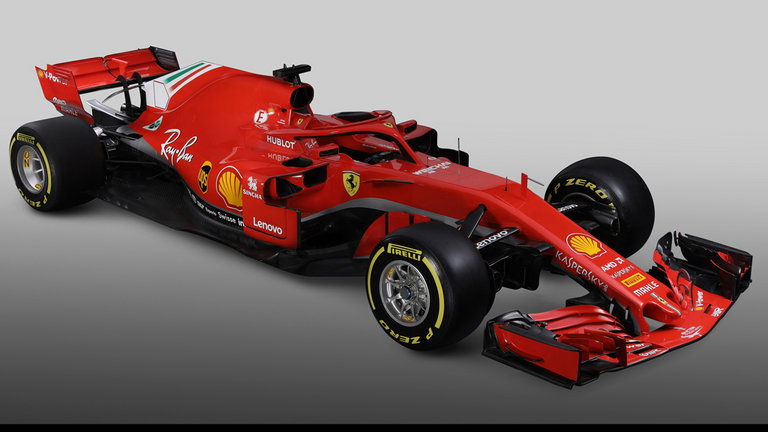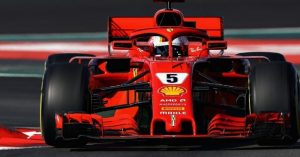

The Scuderia Ferrari F1 team will be debuting rear-view mirrors mounted on the SF71H’s halo at the Spanish Grand Prix.
Watch What’s Trending Now!
The move follows last month’s FIA technical directive that mirrors may be attached to the halo.
The mirrors on the Ferrari haven’t drastically changed, with the two-part design more aerodynamically efficient, but the location is different.
ADVERTISEMENT
According to the technical directive, mirrors can be attached to the halo to improve rearward visibility for the driver. Bearing this in mind, Ferrari are aiming to exploit the aerodynamic implications.

Imago
The 2018 Ferrari
The legal ‘box’ in which mirrors are allowed to be placed has been narrow since outboard mirrors were outlawed in 2010, but the recent ruling opens up new possibilities beyond simply placing the mirrors in a more aerodynamically appealing position.
ADVERTISEMENT
Scuderia Ferrari has placed a winglet above the mirror housing supporting it, which is an extension of the halo’s template on which aerodynamic fairings may be applied.
Teams must fix the mirrors securely to the car to reduce vibrations and further improve visibility, and Ferrari can argue the upper winglet provides the necessary support – even if the lower mount has been made intentionally weak – on the basis the technical directive does allow for what is called minor local reinforcement.
ADVERTISEMENT
The Ferrari design illustrates how teams will take every opportunity to make aerodynamic gains in what is tantamount to a land grab, with designers integrating winglets around the mirror.
“I’m sure that when a team comes forward and says we want to mount it [the mirror] here, it is because they feel it’s going to be a bit better aerodynamically, and that includes halo mounting,” said the FIA’s head of single seater technical matters Nikolas Tombazis.
“It is our responsibility to make sure the rules are specific enough and we hope to make improvements also in the future to make sure the mirrors achieve their real function, which is to be able to see out the back, and to stop them being used for aerodynamic purposes.
ADVERTISEMENT
“As long as there’s a big device somewhere in the middle of the air, teams will always worry about its aerodynamic effect, so it’s our responsibility to regulate it properly.”
ADVERTISEMENT
ADVERTISEMENT
ADVERTISEMENT

